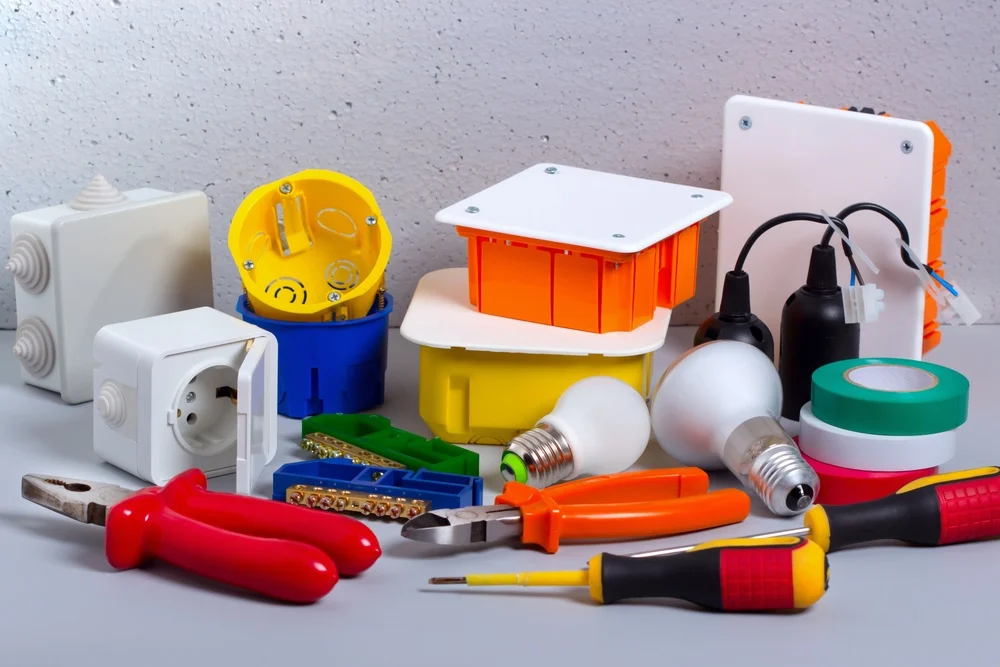Technology moves fast in the electrical equipment world. Electrical equipment suppliers are racing to develop new solutions that improve efficiency, sustainability, and connectivity. These innovations are changing how businesses operate and manage their resources.
The landscape for electric equipment suppliers has transformed dramatically in recent years. From smart technology integration to renewable energy solutions, suppliers are reimagining what’s possible. Companies that stay current with these innovations gain competitive advantages through improved efficiency and reduced costs.
A leading electrical equipment supplier invests heavily in research and development to meet evolving customer needs. The results range from incremental improvements to revolutionary technologies that disrupt traditional approaches. Industry leaders understand that innovation is about solving real problems for their customers.
Electric surplus management has also benefited from these advancements. New technologies help businesses track, repurpose, and optimize their equipment inventory. This reduces waste and maximizes the value of existing assets. For facility managers, maintenance teams, and procurement specialists, understanding these innovations provides valuable insights. Staying informed helps businesses make better decisions about equipment purchases, upgrades, and replacements.
6 Innovations from Leading Equipment Suppliers
Here are some of the key advancements shaping the electrical equipment industry. These innovations focus on enhancing efficiency, reliability, and sustainability for businesses.
1. Smart Circuit Breakers with Remote Monitoring
Electrical equipment suppliers have revolutionized circuit protection through smart breaker technology. These advanced devices go beyond simple current interruption, offering built-in diagnostics and remote monitoring capabilities. The integration of IoT technology allows users to access real-time data on power quality, energy usage, and equipment status from anywhere.
Smart circuit breakers provide several key benefits:
- Early detection of potential issues before they cause outages
- Remote power management through smartphone apps
- Detailed energy usage analytics to identify savings opportunities
- Automatic notifications when abnormal conditions occur
- Integration with building management systems
Leading manufacturers have developed models that can be retrofitted into existing panels without extensive rewiring. This makes the technology accessible even for older facilities looking to upgrade without complete system replacement.
The data collected helps maintenance teams shift from reactive to predictive strategies, addressing small problems before they become expensive failures. Many users report significant maintenance cost reductions after implementing these systems.
2. Energy Storage Solutions for Load Management
Battery storage technology has advanced significantly, with electric equipment suppliers developing integrated solutions for commercial and industrial applications. These systems help manage peak demand charges and provide backup power during outages. Modern energy storage systems operate intelligently, charging when electricity costs are low and discharging during high-rate periods.
The latest innovations in this space include:
- Modular designs that scale easily as needs change
- Advanced battery management systems that extend lifespan
- AI-driven predictive software for optimal charge/discharge timing
- Thermal management improvements that increase efficiency
- Integration with renewable energy sources like solar and wind
These systems help businesses reduce their energy costs while simultaneously improving resilience against power disruptions. Many suppliers now offer performance guarantees, promising specific levels of savings to reduce customer risk.
3. Digital Twin Technology for Equipment Management
A forward-thinking electrical equipment supplier now offers digital twin technology, virtual replicas of physical equipment and systems. These detailed digital models simulate real-world conditions and performance, allowing operators to test scenarios without risking actual equipment. The technology combines IoT sensors, 3D modeling, and AI analytics to create accurate representations.
Digital twins provide numerous advantages:
- Predictive maintenance schedules based on actual operating conditions
- Virtual testing of modifications before physical implementation
- Training simulations for technical staff
- Remote troubleshooting capabilities
- Performance optimization through scenario analysis
Implementation of digital twin technology typically begins with critical equipment and gradually expands to include entire systems. This approach allows organizations to realize benefits quickly while managing implementation costs.
Facilities using digital twins report significant equipment downtime reductions and maintenance cost savings. The technology is particularly valuable for managing complex or aging equipment where replacement parts for electric surplus may be difficult to source.
4. Advanced Diagnostic Tools for Preventive Maintenance
Suppliers have developed sophisticated diagnostic tools that detect potential failures before equipment breaks down. These tools use a combination of technologies, including infrared thermography, ultrasonic testing, vibration analysis, and oil quality testing. Many modern versions transmit data wirelessly to centralized systems for trend analysis.
Key innovations in diagnostic technology include:
- Compact, portable designs that can be used in tight spaces
- Non-invasive testing methods that don’t require shutdowns
- AI-enhanced analysis that identifies patterns human technicians might miss
- Integrated reporting systems that document equipment health over time
- Automated alert systems that notify staff when measurements exceed thresholds
The data collected from these tools enables truly predictive maintenance programs. By identifying issues like bearing wear, loose connections, or insulation breakdown early, maintenance teams can schedule repairs during planned downtime.
Companies implementing these advanced diagnostic approaches typically see a substantial reduction in unexpected equipment failures. This represents significant savings in both repair costs and production losses from unplanned outages.
5. Sustainable and Recyclable Component Design
Leading suppliers have embraced sustainable design principles, creating products with reduced environmental impact. This includes using recycled materials, designing for eventual disassembly, and eliminating harmful substances. Many suppliers now offer end-of-life take-back programs to ensure proper recycling of materials.
Sustainable innovations in the industry include:
- Circuit breakers with biodegradable or recyclable casings
- Transformers using plant-based insulating oils instead of mineral oil
- Cable management systems made from recycled plastics
- Equipment is designed for easy component replacement rather than total replacement
- Documentation of the carbon footprint for major equipment
These approaches help companies meet their environmental goals while often reducing total ownership costs. Modular designs make it easier to upgrade specific components rather than replacing entire systems, reducing waste.
The sustainability focus extends to packaging and delivery methods as well. Many suppliers have reduced packaging materials while improving protection through innovative design. This represents a win-win scenario for both environmental impact and shipping costs.
6. Augmented Reality for Installation and Maintenance
Companies are leveraging augmented reality (AR) technology to transform installation and maintenance processes. Using tablets or AR glasses, technicians can see digital overlays on physical equipment, providing step-by-step guidance, part identification, and real-time data visualization. This technology bridges the knowledge gap between experienced and new technicians.
AR applications in the electrical equipment field include:
- Guided installation procedures with visual cues
- Remote expert assistance for complex repairs
- Training simulations for high-risk procedures
- Quick access to equipment specifications and history
- Visual identification of components needing attention
The technology has proven particularly valuable for complex equipment where incorrect procedures can cause damage or safety hazards. AR systems can prevent common mistakes by highlighting proper connection points and sequence.
Organizations using AR-assisted maintenance report faster completion times for complex tasks and significantly higher first-time success rates. The technology also helps address workforce challenges by allowing experienced technicians to provide virtual guidance across multiple locations.
Bottom Line
What separates industry leaders from the competition? Access to cutting-edge technology that others won’t discover for years.
United Industries doesn’t just sell electrical equipment, we deliver competitive advantage. Our innovation scouts identify breakthrough technologies from global research centers before they reach mainstream markets. This gives our clients a critical edge in efficiency, reliability, and capability.
Our approach is fundamentally different. We start by understanding your unique challenges, then build customized solutions using our exclusive technology partnerships. Our integration teams ensure seamless implementation with minimal disruption to your operations.
Ready to lead rather than follow? Get in touch with us today to discover possibilities others don’t even know exist.
You may also like: How to Build and Scale a Profitable Electrical Business
FAQs
How quickly do innovations in electrical equipment typically provide a return on investment?
Most innovations from electrical equipment suppliers deliver ROI within months to 2 years. Smart monitoring systems show the fastest returns through energy savings, while larger upgrades take longer to recover costs.
What skills do maintenance teams need to work with these new technologies?
Today’s maintenance professionals need traditional electrical knowledge plus digital literacy. Familiarity with mobile apps and basic data analysis is key. Many electric equipment suppliers offer training programs to help teams adapt.
How are smaller businesses implementing these innovations with limited budgets?
Smaller organizations use phased approaches, starting with high-return areas. Subscription-based monitoring systems and equipment-as-a-service options reduce upfront costs. Managing electric surplus through refurbishment offers another cost-effective strategy.
How do these innovations impact equipment lifecycle management?
These technologies extend equipment lifecycles while improving reliability. Digital twin technology helps make better repair-or-replace decisions, often showing that targeted upgrades can match full replacement performance at lower cost.








